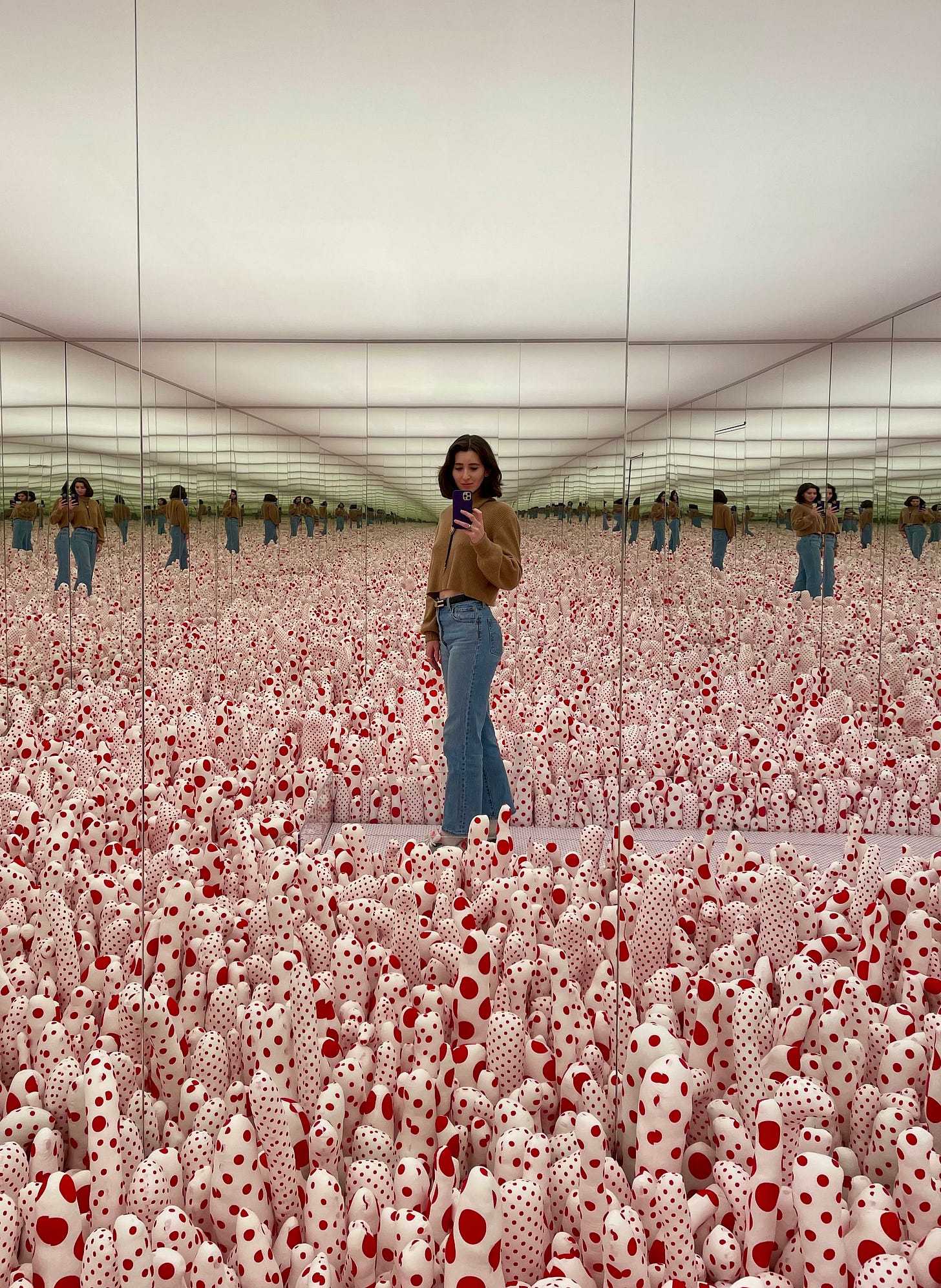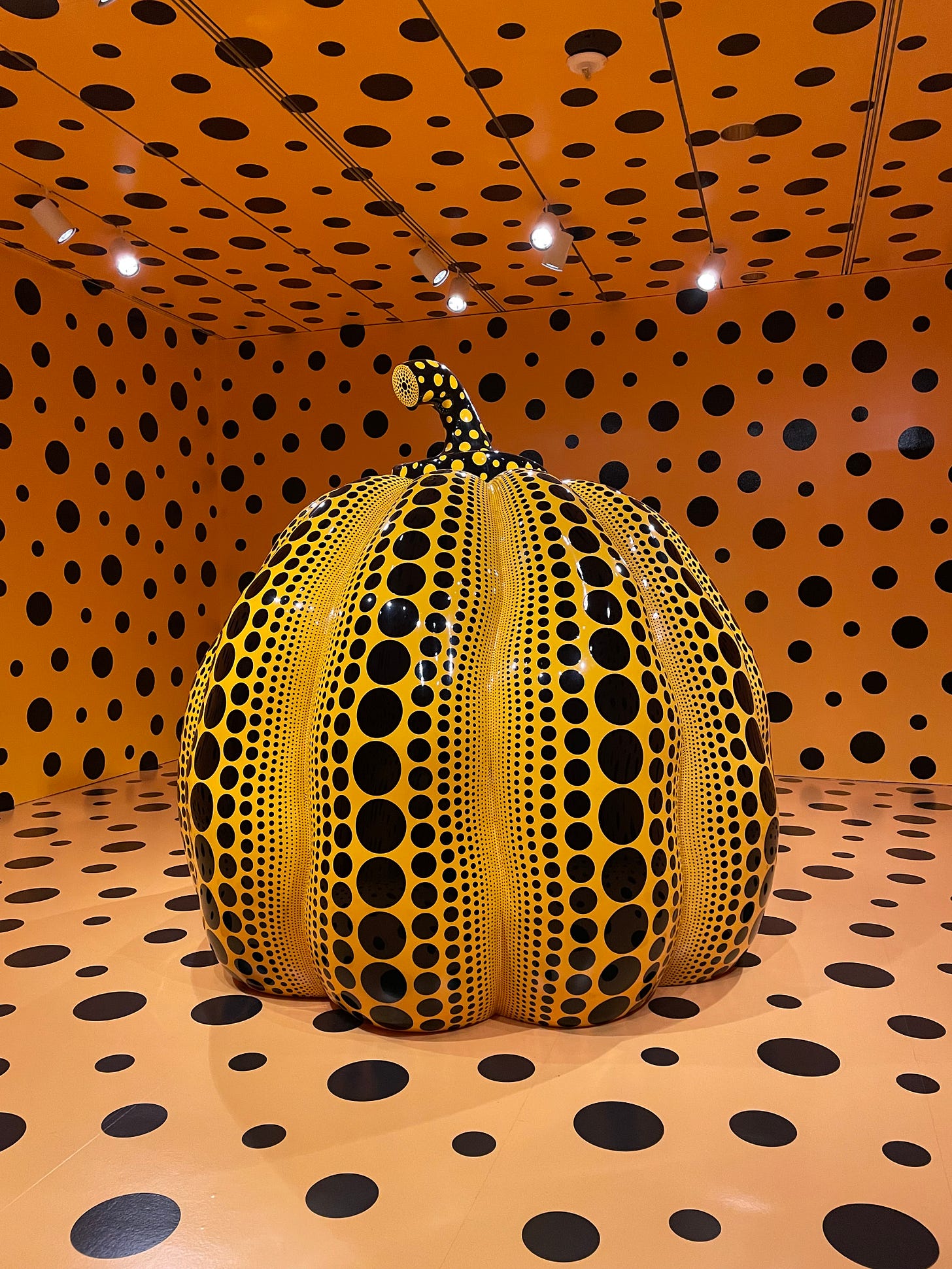I have a special affinity for contemporary Japanese artist Yayoi Kusama. She and I came to D.C. at the same time. Rather, a set of her mirrored room installations and I did. I moved here the same month her attendance-record-shattering Infinity Mirrors exhibit opened at Hirshhorn, the National Museum of Modern Art, in 2017. This was the first big art happening I was in the big city to experience, and it didn’t disappoint. It riveted. It’s hard to not gasp, or, in my case, break into peals of laughter, when you walk into an Infinity Room.
Kusama did not create the infinity mirror as a concept, but she did put four together into enclosed rooms and fill them with her lights and sculptures, inviting viewers into her mind’s eye. The infinity mirror is a configuration of two or more parallel mirrors which creates a series of smaller images to infinity. Her rooms are large enough for two people to stand in comfortably. And you should be comfortable with anyone you enter an Infinity Mirror room with, as they will see your every angle. But Kusama’s intention with these rooms was not to show the self, but rather to obliterate it through repetition.
This metaphorical obliteration of the self saved Kusama from physical obliteration. A life-long sufferer of intrusive thoughts, anxiety, and hallucinations, she used art as a means of translating and metabolizing her internal experience.
Her infamous polka dot motif is another study of obliteration, of dispersing matter until it is diffused into infinity beyond recognition. One of the Infinity Rooms I visited both in 2017 and this past week features a field of polka dot covered phalli. Kusama began making stuffed phalluses and attaching them to pieces of furniture during her mid-century New York City years in the avant-garde scene as means of penis immersion therapy. She was disturbed by the notion of penetration, and her obsession manifested in her “accumulation” sculptures, in performance art, and in the Phalli’s Field room.
I will leave you with a soft, gentle gourd. Kusama appreciates pumpkins for their “generous unpretentiousness” and “solid spiritual balance,” according to the exhibit information. Here is a giant one she made out of fiberglass:
Kusama is worth knowing deeply, so rather than linking to her Wikipedia, I recommend watching the biographical documentary Kusama — Infinity (it’s on Amazon and Hulu). If you’d prefer a screen-free experience, I’m currently enjoying her autobiography, Infinity Net.
Until next week,
Elizabeth






